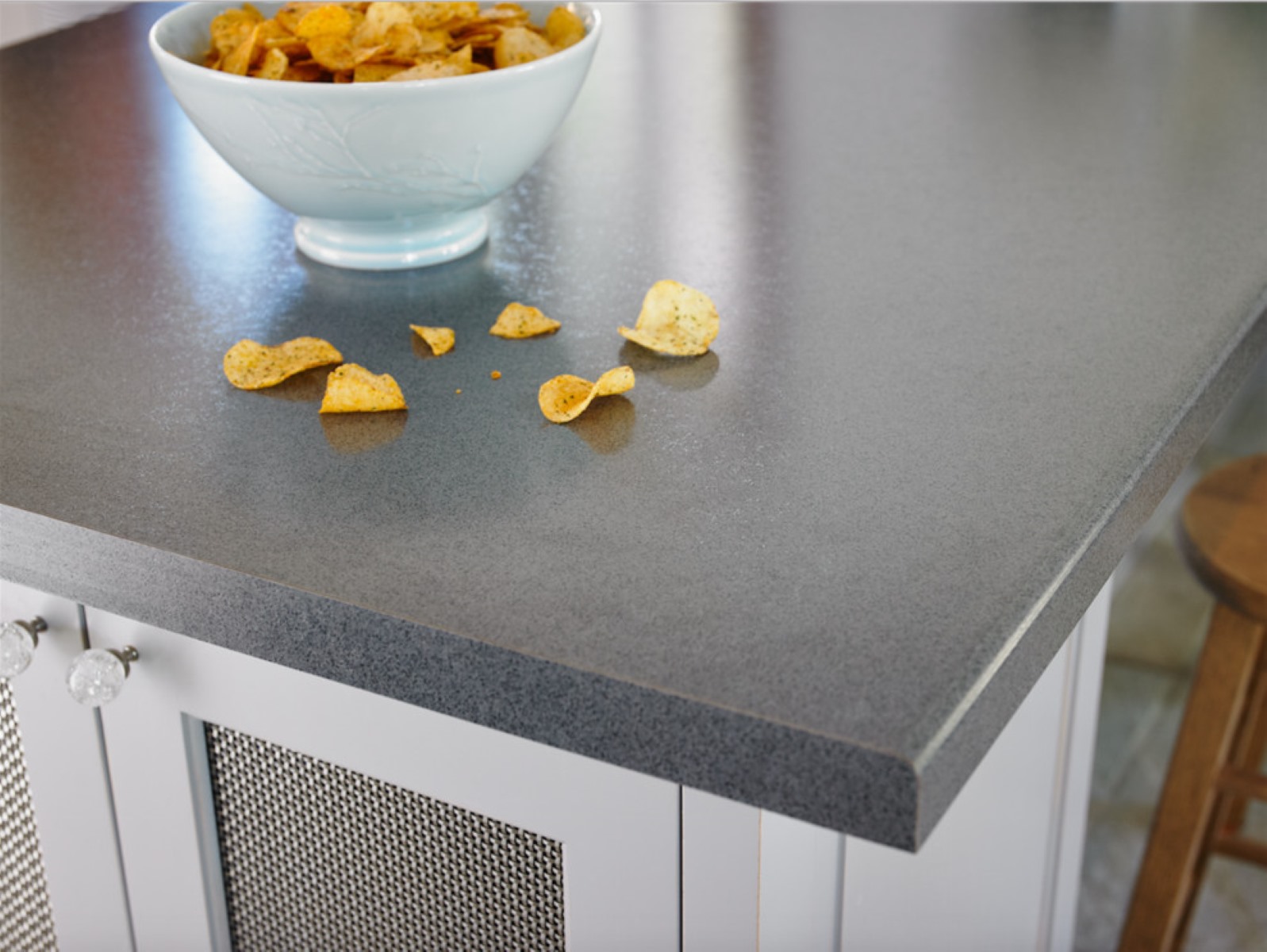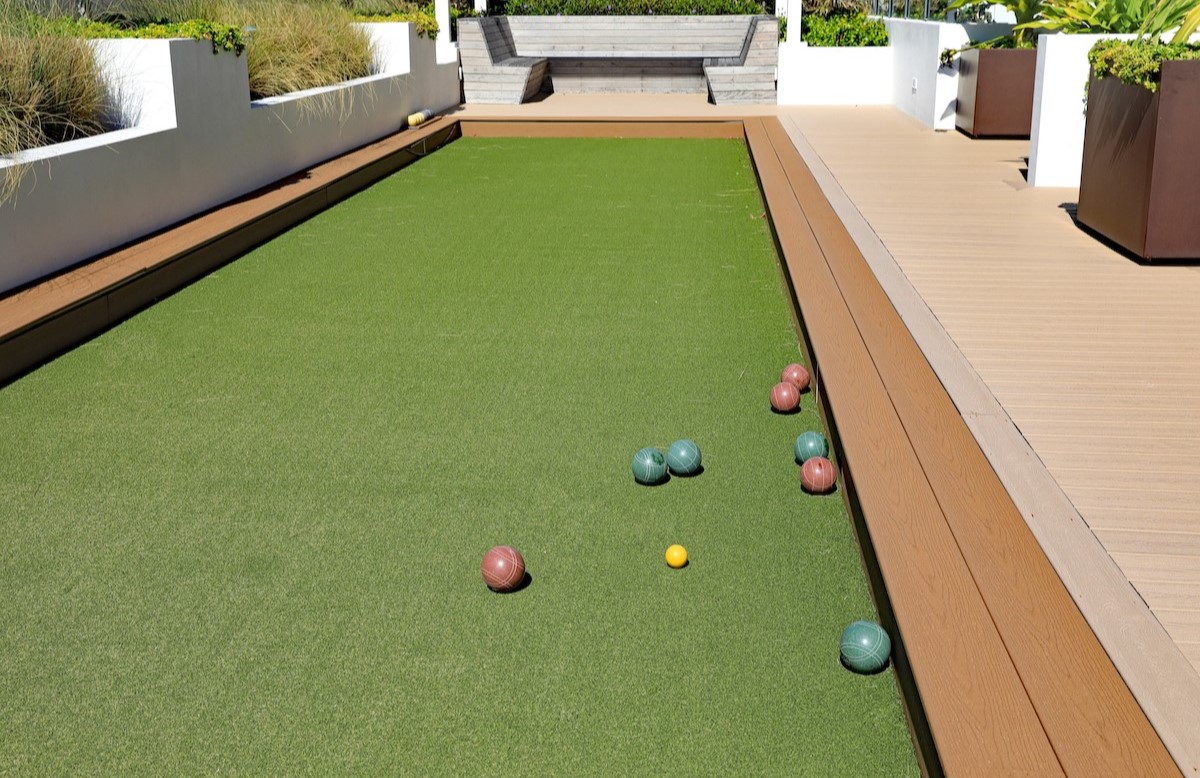Home>Furniture & Design>Interior Design Trends>What Is The Surface Charge Density On The Glass?


Interior Design Trends
What Is The Surface Charge Density On The Glass?
Modified: February 8, 2024
Discover the latest interior design trends and learn about the surface charge density on glass. Stay ahead with our insightful guide.
(Many of the links in this article redirect to a specific reviewed product. Your purchase of these products through affiliate links helps to generate commission for Storables.com, at no extra cost. Learn more)
Introduction
Surface charge density on glass is a critical concept in the realm of physics and materials science. It pertains to the distribution of electric charge on the surface of a glass material. Understanding this phenomenon is essential for various applications, ranging from the development of advanced electronic devices to the optimization of industrial processes.
The surface charge density on glass is a fascinating area of study that delves into the intricate interplay between electrical properties and material composition. By exploring the factors influencing this charge distribution and its measurement techniques, we can gain valuable insights into the behavior of glass surfaces in diverse environments.
This article will delve into the definition of surface charge density, explore the factors that influence its presence on glass surfaces, discuss the methods used to measure it, and highlight its wide-ranging applications. By delving into these aspects, we can unravel the significance of surface charge density on glass and its impact on various technological and scientific domains.
Key Takeaways:
- Glass surface charge density impacts technology
Understanding how electric charge distributes on glass helps create better electronics, clean air, and energy harvesting systems, shaping a futuristic world of innovation and sustainability. - Factors affecting glass surface charge density
The charge on glass is influenced by its composition, environment, contamination, electric fields, and treatments, revealing the secrets behind its electrical behavior and diverse applications.
Read more: What Is The Density Of Glass
Definition of surface charge density
Surface charge density, denoted by the symbol σ (sigma), refers to the amount of electric charge per unit area present on the surface of a material, specifically in the context of glass. It is a fundamental concept in the field of electrostatics and plays a crucial role in understanding the behavior of glass surfaces in the presence of electric fields.
In the case of glass, the surface charge density is determined by the distribution of electric charges across the surface area of the material. This distribution can be influenced by various factors, including the composition of the glass, environmental conditions, and external stimuli such as applied electric fields.
The unit of measurement for surface charge density is coulombs per square meter (C/m²), highlighting the relationship between the amount of charge and the area over which it is distributed. By quantifying the charge present on the surface of glass in this manner, scientists and engineers can analyze and predict the material's behavior in different scenarios, ranging from industrial applications to the development of advanced electronic devices.
Understanding the concept of surface charge density is essential for comprehending the electrostatic interactions that occur at the interface between glass and its surrounding environment. This knowledge forms the basis for exploring the electrical properties of glass and its role in diverse technological and scientific domains.
By delving into the intricacies of surface charge density on glass, researchers can uncover valuable insights into the material's electrical characteristics, paving the way for innovations in fields such as optoelectronics, nanotechnology, and advanced materials science. This foundational understanding of surface charge density serves as a springboard for further exploration and application of electrostatic phenomena in the context of glass materials.
Factors affecting surface charge density on glass
The surface charge density on glass is influenced by a myriad of factors, each playing a crucial role in determining the distribution of electric charge across the material's surface. Understanding these factors is essential for comprehending the complex interplay between the electrical properties of glass and its surrounding environment. Here are the key factors that affect surface charge density on glass:
1. Material Composition:
The intrinsic properties of the glass material, including its chemical composition and structural characteristics, significantly impact the surface charge density. Variations in the composition can lead to differences in the material's ability to hold and distribute electric charge on its surface. For instance, the presence of certain elements or impurities within the glass matrix can influence its electrical behavior, thereby affecting the surface charge density.
2. Environmental Conditions:
The surrounding environment plays a pivotal role in determining the surface charge density on glass. Factors such as temperature, humidity, and atmospheric conditions can influence the accumulation and distribution of electric charge on the glass surface. Changes in environmental parameters can alter the electrostatic interactions between the glass and its surroundings, consequently impacting the surface charge density.
Read more: What Is A Good Density For Memory Foam
3. Surface Contamination:
The presence of contaminants or foreign substances on the glass surface can affect its electrical properties, leading to variations in surface charge density. Contaminants may alter the surface characteristics, affecting the adhesion and distribution of electric charge. Understanding and mitigating the impact of surface contamination is crucial for maintaining consistent surface charge density in practical applications.
4. Applied Electric Fields:
External electric fields exert a significant influence on the surface charge density of glass. When subjected to an electric field, the distribution of charge on the glass surface can be modified, leading to changes in the surface charge density. This phenomenon is of particular importance in applications involving the manipulation of electric fields for functional purposes, such as in electrostatic devices and sensors.
5. Surface Treatment:
The treatment of glass surfaces through processes such as coating, etching, or modification can alter the surface charge density. These treatments can introduce changes in the surface morphology and chemical properties, consequently impacting the distribution of electric charge. Understanding the effects of surface treatment is essential for tailoring the electrical behavior of glass to specific application requirements.
By considering these factors, researchers and engineers can gain valuable insights into the intricate mechanisms governing the surface charge density on glass. This comprehensive understanding forms the foundation for optimizing the electrical properties of glass in various technological and scientific domains, paving the way for innovative applications and advancements in materials science and engineering.
Measurement of surface charge density
The measurement of surface charge density on glass is a critical aspect of understanding the material's electrical properties and behavior in different environments. Several techniques are employed to quantify the distribution of electric charge on the glass surface, providing valuable insights for various scientific and technological applications.
1. Kelvin Probe Force Microscopy (KPFM):
KPFM is a powerful technique used to measure surface potential and charge distribution at the nanoscale level. By employing a conductive atomic force microscope (AFM) tip, KPFM can map the surface potential of the glass, allowing for the calculation of surface charge density based on the known area of the measurement. This non-destructive method provides high-resolution charge mapping capabilities, enabling researchers to visualize and quantify the distribution of charge on the glass surface with exceptional precision.
2. Capacitance-Based Methods:
Capacitance-based techniques involve measuring the capacitance of the glass-air interface, which is influenced by the surface charge density. By analyzing the changes in capacitance under different conditions, such as varying humidity levels or applied electric fields, researchers can infer the surface charge density on the glass. These methods offer insights into the dynamic behavior of surface charge density in response to environmental and external stimuli, contributing to a comprehensive understanding of the material's electrical characteristics.
3. Contact Electrification:
Contact electrification, also known as triboelectric charging, involves inducing charge on the glass surface through contact with different materials. By measuring the resulting surface charge using sensitive electrometers or charge detection systems, researchers can quantify the surface charge density generated through contact electrification. This approach provides valuable information about the charge transfer mechanisms and the influence of material interactions on the glass surface charge density.
4. Surface Potential Measurements:
Surface potential measurements, utilizing techniques such as electrostatic voltmeters or scanning probe microscopy, offer a direct means of assessing the electric potential distribution on the glass surface. By correlating the surface potential with the known area of measurement, researchers can calculate the surface charge density, providing crucial insights into the spatial distribution and magnitude of charge on the glass surface.
Read more: What Is Low-Density Residential Zoning
5. Optical Methods:
Optical methods, including surface photovoltage and surface photovoltage spectroscopy, enable the non-contact measurement of surface charge density by leveraging the photoelectric effect. These techniques utilize light-induced changes in surface potential to infer the surface charge density distribution on the glass. By analyzing the optical response of the glass surface, researchers can gain valuable insights into the material's charge distribution under different illumination conditions.
By employing these diverse measurement techniques, researchers can comprehensively characterize the surface charge density on glass, facilitating a deeper understanding of its electrical behavior and enabling the development of advanced materials and technologies. These measurement methods play a pivotal role in elucidating the complex interplay between electric charge distribution and the material properties, paving the way for innovative applications in fields such as optoelectronics, energy harvesting, and electrostatic-based devices.
Applications of surface charge density on glass
The understanding of surface charge density on glass holds immense significance across a wide array of applications, where the electrical properties of glass play a pivotal role in enabling innovative technologies and scientific advancements. Here are some notable applications that leverage the concept of surface charge density on glass:
1. Electrostatic Precipitators:
Surface charge density on glass finds practical application in electrostatic precipitators used for air pollution control. In these systems, charged glass surfaces attract and capture particulate matter from industrial emissions, thereby mitigating air pollution. The control and optimization of surface charge density on the glass collection plates are crucial for enhancing the efficiency of particulate capture, contributing to cleaner air and sustainable industrial operations.
2. Electrostatic Sensors and Actuators:
The precise manipulation of surface charge density on glass surfaces is instrumental in the development of electrostatic sensors and actuators. These devices utilize the electrostatic forces generated by charged glass surfaces to detect environmental parameters or actuate mechanical components. By tailoring the surface charge density, engineers can optimize the performance and sensitivity of such devices, enabling applications in touchscreens, microelectromechanical systems (MEMS), and haptic interfaces.
Read more: What Infill Density Should I Use
3. Optoelectronic Devices:
Glass substrates with controlled surface charge density play a crucial role in optoelectronic devices such as organic light-emitting diodes (OLEDs) and photovoltaic cells. The modulation of surface charge density influences the interface properties between the glass and active electronic materials, impacting device efficiency and performance. By engineering the surface charge density, researchers can enhance the electrical characteristics of optoelectronic devices, paving the way for advancements in display technologies and renewable energy systems.
4. Electrostatic Coating and Printing:
Surface charge density on glass is integral to electrostatic coating and printing processes, where charged glass surfaces are utilized to attract and adhere coatings or ink particles. By controlling the surface charge density, manufacturers can achieve precise deposition and uniform coating thickness, contributing to the production of high-quality printed materials, architectural glass coatings, and advanced functional surfaces.
5. Electrostatic Chucks in Semiconductor Manufacturing:
In semiconductor manufacturing, electrostatic chucks employ controlled surface charge density on glass or ceramic surfaces to securely hold and manipulate semiconductor wafers during processing. The optimization of surface charge density enables reliable wafer clamping and electrostatic discharge mitigation, ensuring the integrity of semiconductor fabrication processes and the production of high-performance electronic components.
6. Electrostatic Energy Harvesting:
The concept of surface charge density on glass is harnessed in electrostatic energy harvesting systems, where the conversion of mechanical energy into electrical energy relies on the controlled accumulation and dissipation of charge on glass surfaces. By leveraging surface charge density, researchers aim to develop efficient energy harvesting technologies for powering wireless sensors, wearable electronics, and low-power electronic devices.
By exploring these diverse applications, it becomes evident that surface charge density on glass serves as a fundamental enabler of technological innovation and scientific progress. The precise control and understanding of surface charge density play a pivotal role in optimizing the electrical behavior of glass materials, unlocking a myriad of applications across industries and research domains.
Read more: What Is A Solid Surface Bathtub?
Conclusion
In conclusion, the concept of surface charge density on glass represents a fundamental aspect of the material's electrical behavior, with far-reaching implications across various scientific, technological, and industrial domains. The intricate interplay between material composition, environmental factors, and applied electric fields influences the distribution of electric charge on glass surfaces, shaping its electrical properties and enabling a diverse range of applications.
By delving into the factors affecting surface charge density on glass, we have gained valuable insights into the complex mechanisms governing the material's electrical behavior. The understanding of how material composition, environmental conditions, surface contamination, applied electric fields, and surface treatment influence surface charge density provides a comprehensive foundation for optimizing the electrical characteristics of glass in practical applications.
Furthermore, the measurement techniques employed to quantify surface charge density, including Kelvin Probe Force Microscopy, capacitance-based methods, contact electrification, surface potential measurements, and optical methods, offer invaluable tools for characterizing and understanding the distribution of electric charge on glass surfaces. These measurement methods not only facilitate scientific exploration but also drive the development of advanced materials and technologies, ranging from nanoscale charge mapping to non-contact surface charge density assessment.
The applications of surface charge density on glass underscore its significance in enabling technological innovation and progress. From electrostatic precipitators for air pollution control to the development of optoelectronic devices and electrostatic energy harvesting systems, the precise control and understanding of surface charge density on glass play a pivotal role in driving advancements in air quality management, electronic device fabrication, energy harvesting, and semiconductor manufacturing.
In essence, the exploration of surface charge density on glass unveils the intricate relationship between electric charge distribution and material properties, offering a pathway for harnessing the material's electrical characteristics to address diverse challenges and drive innovation. As researchers and engineers continue to unravel the complexities of surface charge density on glass, the potential for groundbreaking advancements in fields such as materials science, electronics, and environmental sustainability becomes increasingly tangible, paving the way for a future where the electrical properties of glass contribute to transformative technological and scientific developments.
Frequently Asked Questions about What Is The Surface Charge Density On The Glass?
Was this page helpful?
At Storables.com, we guarantee accurate and reliable information. Our content, validated by Expert Board Contributors, is crafted following stringent Editorial Policies. We're committed to providing you with well-researched, expert-backed insights for all your informational needs.











0 thoughts on “What Is The Surface Charge Density On The Glass?”